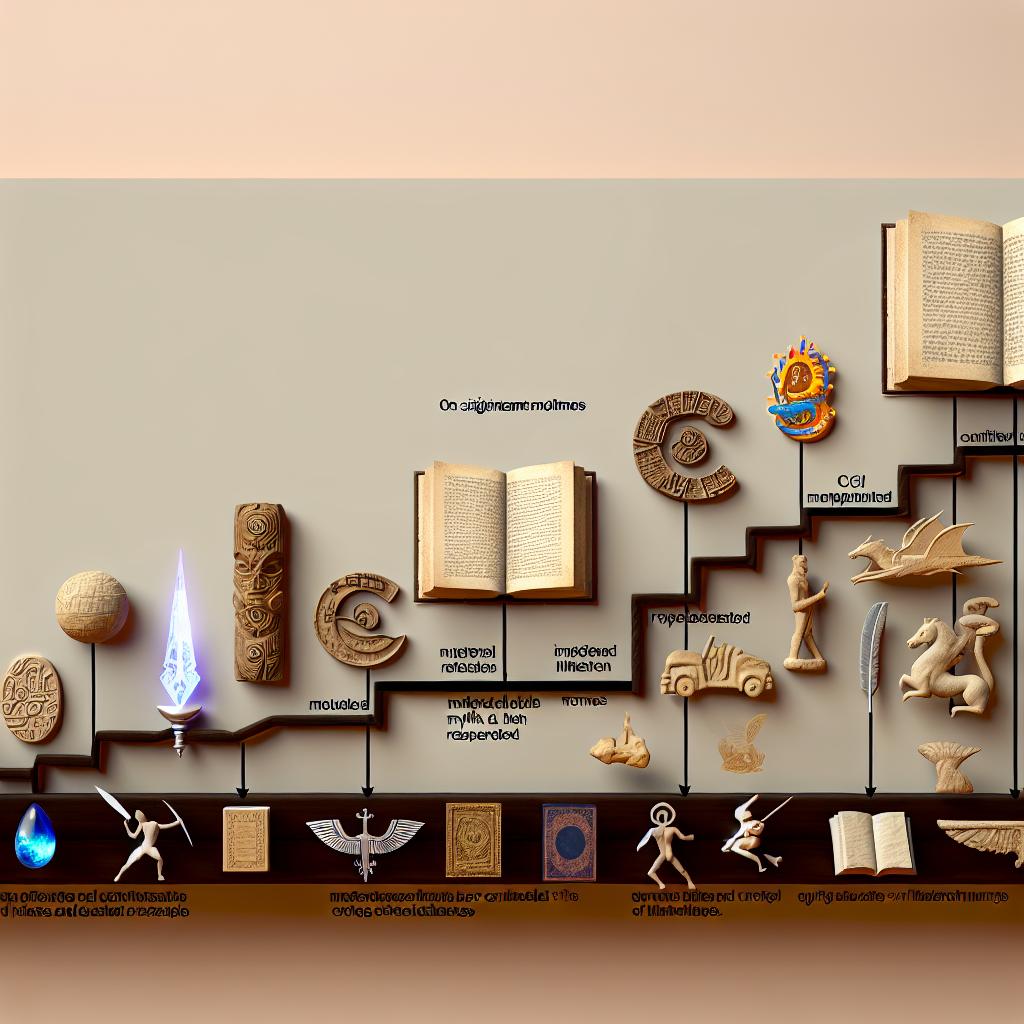The Evolution of Fantasy Literature Over the Centuries

The Origins of Fantasy Literature
The roots of fantasy literature can be traced deep into the annals of ancient civilizations, intertwined with mythologies and folkloric traditions. These stories from bygone eras often encapsulate supernatural elements and fantastical beings, reflecting the human penchant for imagining worlds beyond the ordinary. Texts such as the Epic of Gilgamesh from Mesopotamia, Greek myths, and Norse sagas serve as archetypes, showcasing how early cultures employed fantasy to delve into elemental human themes, ranging from heroism and morality to existential musings.
Medieval Period: Rise of Allegorical Stories
The medieval period marked a transformation in the realm of fantasy literature, evolving it toward allegorical tales that frequently bore religious and moral overtones. In this era, stories were rich with symbolic meanings, often illustrating the spiritual journey of mankind and the struggle between good and evil. Geoffrey Chaucer’s The Canterbury Tales and Dante Alighieri’s The Divine Comedy are quintessential examples where fantasy elements mirror deep moral and spiritual narratives. During this period, there was a discernible increase in stories featuring magical or mythical beings, reflecting the era’s preoccupations with the mystical and the divine.
Renaissance to Enlightenment: Transition and Transformation
As history transitioned from the Renaissance into the Enlightenment, fantasy literature underwent significant changes. It began to interweave with a more critical exploration of human nature, riding the waves of intellectual awakening that swept across Europe. Fantastical voyages, often laced with philosophical musings, became central to narratives, with authors using these imaginary realms as vehicles for social and political satire. A prominent example remains Jonathan Swift’s Gulliver’s Travels, a narrative ripe with fantastical settings designed to critique and lampoon contemporary society. The Enlightenment paved the way for a richer blend of fantasy with realism, allowing authors to experiment with narratives that challenged the status quo.
19th Century: The Advent of Modern Fantasy
The advent of the 19th century marked a foundational shift towards what is recognized today as modern fantasy literature. This era saw the genesis of narratives that fused elements of the fantastic with emerging scientific ideas, adding complexity to the genre. Mary Shelley’s Frankenstein is notable for integrating science fiction with gothic horror, probing moral inquiries through its speculative lens. Concurrently, fairy tales gained popularity, particularly those aimed at younger audiences. The Brothers Grimm and Hans Christian Andersen became prominent figures, their collections providing fertile ground from which modern storytelling traditions have grown. Their tales, imbued with charmed forests, talking animals, and moral lessons, captured the imagination of a rapidly modernizing world.
20th Century: Foundation of Classic Fantasy
The early 20th century laid the bedrock for what is considered classic fantasy. It was a time when the genre’s potential was fully realized, crafting expansive, immersive worlds that would leave an indelible print on popular culture. J.R.R. Tolkien’s novels, such as The Hobbit and the The Lord of the Rings series, popularized high fantasy. Tolkien’s meticulous world-building and epic storytelling established new standards for the genre, crafting realms complete with their own histories, languages, and mythologies. Parallelly, C.S. Lewis’s The Chronicles of Narnia offered a different flavor by infusing fantasy with Christian allegory. This blend of spiritual and fantastical allowed fantasy literature to explore thematic dimensions that had previously been untouched.
Late 20th Century: Diversification and Expansion
In the latter half of the 20th century, fantasy literature underwent further diversification and expansion. Authors broke the mold, introducing new themes and settings that broadened the genre’s horizon. Writers like Ursula K. Le Guin and Anne McCaffrey explored uncharted territories by merging elements of fantasy with science fiction. This era marked the emergence of distinctive sub-genres such as urban fantasy and steampunk, which mirrored the societal shifts and growing technological advancements of the time. These new manifestations demonstrated fantasy literature’s adaptability, sustaining its relevance and appeal in an evolving cultural landscape.
21st Century: Globalization and Innovation
In the contemporary 21st century, fantasy literature has continued to grow globally, spurred by innovation and diverse cultural contributions. Authors from varied backgrounds have imbued the genre with fresh perspectives, offering narratives that resonate with a global audience. Digital technology’s rise has further amplified this expansion, enabling the creation of intricate, expansive fantasy universes accessible through multimedia platforms. Interactive elements, such as games and digital storytelling, have emerged, providing fans with immersive experiences and broadening the narrative possibilities. These developments reflect fantasy literature’s capability not only to adapt but to push boundaries, meeting the demands of an increasingly interconnected world.
Throughout its evolution, fantasy literature has reflected the complexities, dreams, and aspirations inherent in human societies. Its enduring ability to transform and adapt has ensured its perpetual popularity across generations. As new voices and technologies continue to influence the genre, fantasy literature remains a powerful conduit for exploring the vast spectrum of human experience and imagination.
Comments are closed.
Comments on 'The Evolution of Fantasy Literature Over the Centuries' (0)
Comments Feed